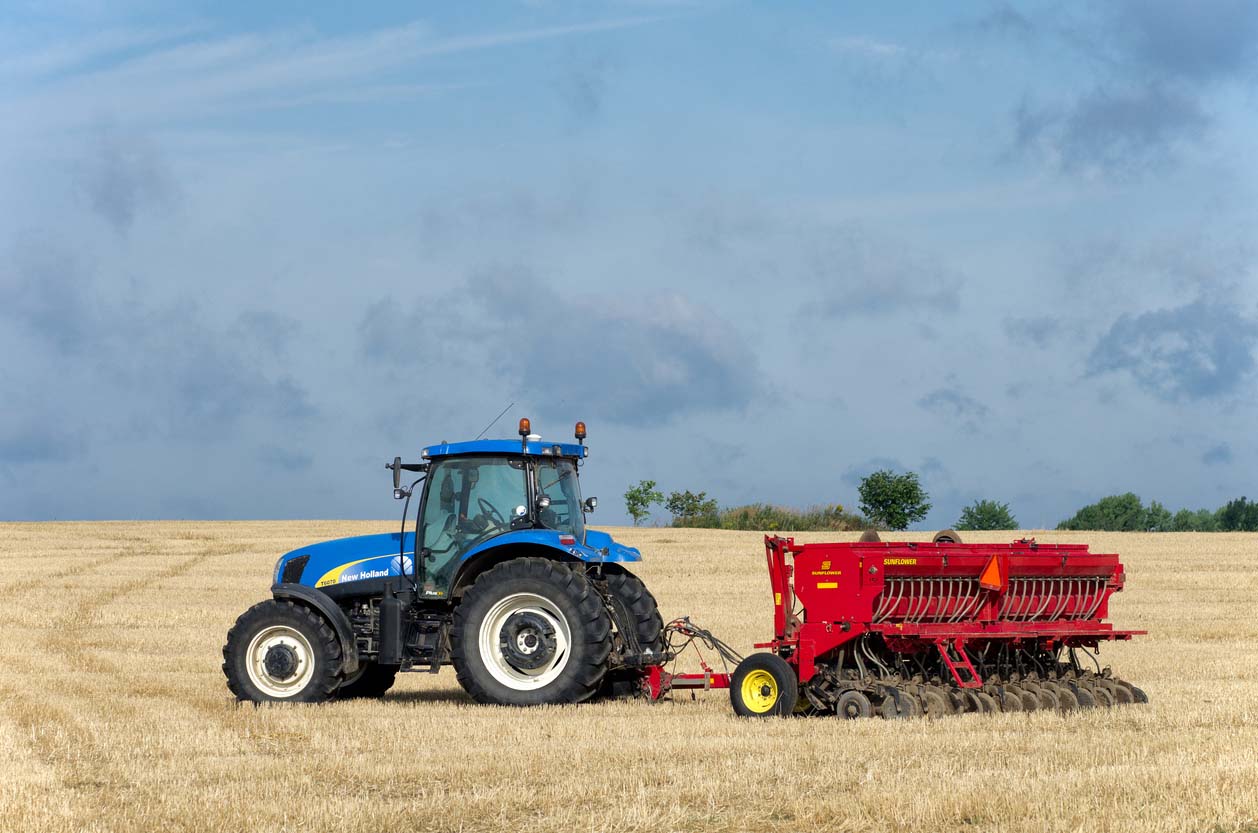Stop Tilling to Improve Soil Health
No-tilling corn is a difficult transition for most farmers. When farmers start no-tilling, the transition time may last 3-7 years and corn yields may often be reduced during that transition period. An alternative is to strip till the soil which gives a farmer some of the benefits of each tillage system. Strip-tillage is minimum tillage 6-10 inches wide and 3-8 inches deep in a band where the corn seeds will be planted next year. The area between the tilled strips is no-till which allows the soil to be protected by crop residue and/or cover crops. The tilled zone typically driers out and is warmer in the spring, promoting good corn germination.
Typically, a farmer will pre-form the strips in the fall using specialized equipment, although sometimes the strips are formed in the spring, depending on weather conditions. Generally, strip tillage reduces the number of field tillage operations down to one or two passes compared to several passes using conventional tillage. Most strip till equipment requires about 30 horsepower per tilled row. Reducing tillage between the tilled strips improves soil structure, reduces soil compaction, and reduces soil erosion. The tilled strips though may still have soil compaction and erode. On sloping fields, contour stripping around the slope or hill may help reduce rills and gully erosion. Overall, strip tillage should have less soil erosion than conventional tillage but more than no-till.
There are several benefits to strip still. The warmer soil and aerobic condition in the tilled seedbed generally produce a good seed bed and seed to soil contact for planting corn. Strip till works well in poorly drained flat heavy clay soils. Farmers save time and fuel due to fewer tillage passes which reduces tillage costs. In strip till systems, liquid fertilizer is often applied in the tilled strip where seed is planted. Precision application of fertilizer improves fertilizer plant uptake efficiency and may result in less fertilizer being utilized. Some farmers plant in the strips without GPS, but without GPS it can be difficult to stay on the row. Earthworm populations will increase in the 20 to 22-inch undisturbed zone along with beneficial microbes that do not tolerate tillage. Controlled traffic becomes a huge benefit in strip till if it is performed every year on the same strips, reducing field soil compaction. In general, corn yields will be similar in strip till compared to conventional tilled soils, but without as much soil erosion. Strip till is also considered a conservation form of no-till.
There may also be some problems with making strip till succeed. Sometimes in the spring, the fall tilled strips can be difficult to plant into if the strips erode or become uneven due to excessive rainfall or melting snow over the winter. Often crop residue may mingle into or obscure the tilled strip, depending on weather conditions and slope. In a dry spring, the tilled zone may be too dry resulting in reduced corn germination. If the strip tillage is performed in a wet field in the fall, some of the benefits may be reduced due to poor soil structure and compaction. Farmers who alternate between full tillage one year and strip till the next will probably see fewer advantages due to the soil disturbance. Farmers should avoid moving the strip once it is established, because it just increases the impacts of soil compaction and soil disturbance over a larger area. Just like no-till, strip till takes several years of transition to see most soil benefits.
The biggest soil health benefit of strip tilling comes from the undisturbed soil which promotes earthworms and beneficial microbes. According to Frank Gibbs, retired NRCS soil conservationist, 2-3 earthworm middens per square foot is common in minimum tilled soils, increasing to 4-6 middens in strip till. When a good crop rotation is used in combination with cover crops and good drainage, 8-9 middens per square foot is possible. These earthworms may consume 9 tons of crop residue yearly and greatly improve soil structure. To promote earthworms in a strip till system, good drainage is a key along with soils that are well aerated and not compacted. Minimizing the tillage to a small band and planting a cover crop in undisturbed strips provides earthworms with both food and shelter. Strip tillage with cover crops and increasing earthworm population may promote huge soil health and environmental benefits to our soils.
